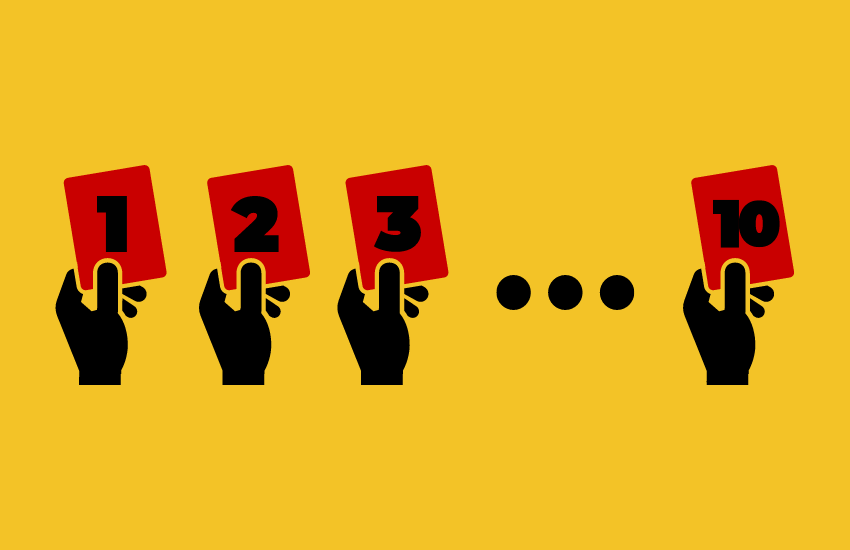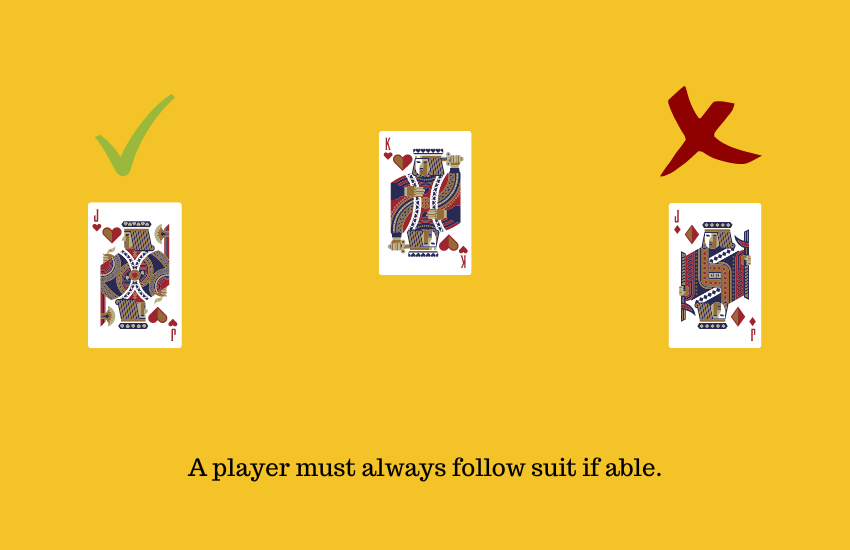
OBJECTIVE OF WIZARD: Be the player with the highest score at the end of the game
NUMBER OF PLAYERS: 3-6 players
NUMBER OF CARDS: 52 playing cards, 4 colored Jokers, 4 colorless Jokers
RANK OF CARDS: (low) Colorless Jokers, 2’s – Aces, Colored Jokers (high)
TYPE OF GAME: Trick taking
AUDIENCE: Adults
OVERVIEW OF WIZARD
Wizard is a trick-taking card game developed in 1984 by Ken Fisher. It can be purchased commercially, but it can also be played with a full deck along with Jokers taken from three other decks.
The most popular version available to buy uses a standard 52 card deck, and it includes 4 Jester cards and 4 Wizard cards. The commercial version also includes scoresheets.
In this game, players are trying to bid the precise number of tricks they will take during the hand. Points are awarded or deducted based on the accuracy of the bid. This is an extremely challenging trick-taking game.
THE CARDS & THE DEAL
To construct the deck for Wizard, players will need access to four identical decks. It is important that all of the cards have the same back design. One entire deck will be used. From the other three decks, pull the colored and colorless Jokers.

The result is a sixty-card deck that includes fifty-two cards ranked 2 – Ace, four colorless Jokers that represent the Jesters, and four colored Jokers that represent the Wizards.
In this game, Jesters are always the lowest-ranked cards. Wizards are always the highest-ranked cards.
To determine the first dealer and the scorekeeper, each player should draw a card from the deck. The player who drew the highest card then deals first. The player with the lowest card must also keep score for the entire game.
To begin the game, the dealer shuffles and then deals one card to each player. The rest of the cards are then placed in the center.
The top card of the pile is flipped over to determine the trump suit. If a Jester is flipped over, there is no trump suit for the round. If a Wizard is flipped over, the dealer gets to determine the trump suit.
The deal then passes left and one additional card is dealt each round. For round two, players are dealt two cards. Round three has three cards dealt and so on.

This continues until the entire deck is dealt. For a three-player game, each player will get 20 cards for the final round. For a four-player game, players will be dealt 15 cards. Five players will get 12 cards in their final round, and six players will see 10 cards for the final round. There is no trump suit for the final round.
THE PLAY
After the cards have been dealt and the trump suit determined (if possible), the bidding phase may begin. The player to the left of the dealer bids first. They look at their hand and determine how many tricks they believe they can take.
They bid that number, and the bid is documented by the scorekeeper. Bidding passes left and ends with the dealer. Players are striving to capture precisely the number of tricks they bid.
The player to the left of the dealer begins the trick by choosing one card from their hand to play to the center of the table.

Following players must follow suit if they can, but they may play a Jester or Wizard instead if they wish. The player who played the highest card in the suit that was led or the first Wizard wins the trick.
If a Wizard is led, following players may play any card they wish. If more Wizards are played, the first Wizard takes the trick.
When a Jester is led, the next suited card determines the suit that must be followed. If a Jester is led and then immediately followed by a Wizard, the remaining players may play any card they wish. If every player plays a Jester, the first Jester takes the trick.
Play like this continues until the completion of the round.
SCORING FOR WIZARD
At the end of the round, points are awarded based on the players’ bid accuracy. When a player meets their bid, they earn 20 points plus 10 points for each trick they took.
For example, if a player bids 4 and captures exactly 4 tricks, they earn 60 points. 20 points are earned for bidding correctly, and 40 points are earned for the tricks they captured.
If a player fails to meet their bid, they then lose 10 points for each trick over or under their bid. So, if a player bids 5 and only takes 3, they would lose 20 points from their score.
WINNING WIZARD
The player with the highest score at the end of the final round wins the game. Due to the nature of earning points, it is possible for the winner to have a negative score.

If you love Wizard, try out Euchre for another fun trick-taking game.
FREQUENTLY ASKED QUESTIONS
What is the trump suit in Wizard the card game?
The trump is determined before each round by flipping the top card of the shuffled deck.
How do you win Wizard the card game?
The winner is the player with the highest point total at the end of the final round.
What is the number of cards dealt to each player?
For the first round each player will be dealt 1 card. This increases each round by one caqrd until the entire deck is dealt in the final round.
What happens if a player cannot follow suit?
Players must follow suit if possible, but if unable a player may play a jester or a wizard. If none of these options are possible a player may play whatever card they wish to the trick.
- TRIPLE SNAKES - February 15, 2021